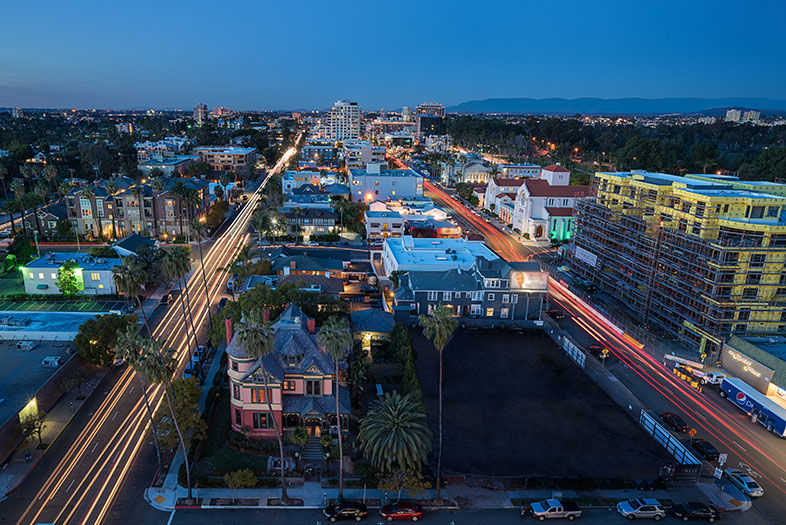Attorney Mia Saling had been renting a three-bedroom house in San Elijo Hills for several years, but when her two roommates moved out of the area and the rent increased to $2,700 (with rising water and utilities costs), Mia decided it was time to find a solo place for herself and her mini dachshund. Willing to downsize to a one bedroom in North County to stay within her $1,200 budget, Mia found the task far more daunting than she’d expected. “I was really discouraged,” she says. It took almost two months of proactive searching before she found a 650-square-foot cottage in Vista for $1,100 per month. “I had to jump on it immediately. It’s small and doesn’t have some of the features I was hoping for, but at least there’s a little yard for my dog, so I’m relieved!”
With the average price of a one-bedroom unit at $1,634 and a two-bedroom at $2,033, San Diego lays claim to the ninth most expensive metropolitan rental market in the U.S.—100.3 percent above the national average—despite our U.S. Census ranking as 27th in median income. Overall, rents have been increasing at 8–10 percent per year, but for in-demand, central neighborhoods like Hillcrest and North Park, that figure is closer to 20 percent. Many San Diego renters have no choice but to overspend. Fifty-five percent of renters in San Diego are considered “cost burdened,” spending well over the recommended 30 percent of monthly income on housing.
Acupuncturist Donald Phillips was very happy with the roomy two-bedroom, one-bath Hillcrest duplex he lived in for five years, close to work and in a neighborhood he loves. The building was recently sold, however, and Phillips received a 60-day notice from the new owner. The rent would increase from $1,200 per month to $3,000. “There is nothing in this area in my price range,” he laments, “and the only places I’ve found for that amount are studios or small one-bedrooms in El Cajon or Santee. I’m afraid I’ll have to downsize considerably and spend more time commuting.”
San Diego lays claim to the ninth most expensive metropolitan rental market in the U.S.—100.3 percent above the national average—despite our U.S. Census ranking as 27th in median income.
Lack of inventory is a contributing factor to the escalating rents in San Diego. Desirable units are snapped up within hours, even with increasingly stricter qualification criteria for potential lessees. Many privately owned “granny flats,” guest houses, cottages, and garage apartments that were formerly available long-term have been converted to short-term vacation rentals through Airbnb and VRBO.
With less than a 4-percent vacancy rate, it’s a landlord’s market. Maria Hesse, a private chef and former property manager, found that out the hard way, when the rent on the one-bedroom La Mesa apartment she shares with her 10-year-old son recently spiked from $985 to $1,200, with only a 60-day notice. “I’ve lived here for 10 years,” she explains. “There is nothing to justify an almost 22-percent rent hike. There needs to be some sort of rent control in the county. I don’t see how this is sustainable.”
A growing number of San Diegans have found sustainability not in San Diego, but across the border, enjoying a higher standard of living on the beaches between Tijuana and Rosarito for one-third the cost of similar rentals in San Diego. A recent Craigslist search yielded a three-bedroom, 2.5-bath for $950, a three-bedroom, two-bath for $745, and a two-bedroom, one-bath for $650—all new homes with ocean views in gated communities within 15 minutes of the border. With a SENTRI pass, you could be in downtown San Diego in 30–45 minutes.
If Baja is out of the question and you want to stay in the San Diego Metro area, time your move to the fall, when rental prices seem to be slightly lower. Or, live in more outlying areas. In Escondido, the average rent for a one-bedroom is about $1,329. In Ramona, a recent perusal of Craigslist turned up several 900-square-foot, two-bedroom apartments for $1,200 per month. If the beach is your location of choice, Oceanside and Imperial Beach, both up-and-coming neighborhoods, offer more wallet-friendly alternatives than any of the beach communities between them.
Living in one of the nation’s most beautiful metropolitan areas has its price—and its rewards. Sometimes you just have to think in terms of value, rather than price.

Rent Uncontrolled
PARTNER CONTENT
San Diego has the ninth most expensive metropolitan rental market in the U.S. | Photo by John Bahu

















